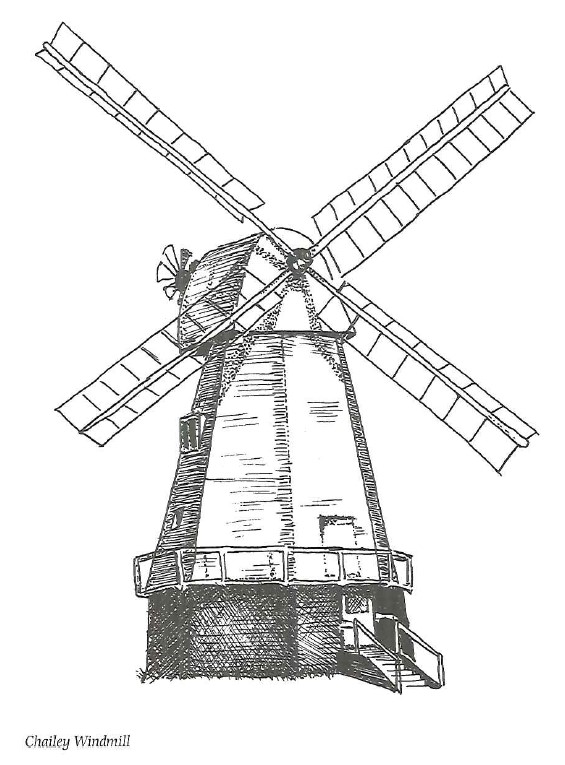They like to make sure you stick on the fold’ in these parts because the inhabitants of the original community like to preserve their independence from the bustling and rapidly expanding market town which grew with the railway. Old Heathfield is separated from its younger but larger brother by Heathfield Park, which is surrounded by a high stone wall three miles long; it took an old workman three years to build it single-handed – and at a mile a year that is not bad going.
In the mansion at Heathfield Park lived General George Augustus Elliott, Baron Heathfield, who successfully defended
Gibraltar against the Spanish in a siege lasting three years in the 18th century. The Gibraltar Tower in the grounds of the park was erected in his memory. It stands 55ft high and the visitor is supposed to be able to see 40 churches from the top, given a clear day (and a telescope).
George Gilbert, one-time soldier, obtained work in Heathfield on the estate of his old commander. He became a travelling Methodist preacher, and his powerful oratory was heard in villages throughout the county, though not always listened to. At Ticehurst they pelted him with mud and stones while the church bells were rung to drown his words.
With a wife and 10 children to support through carpentry, he eventually received a stipend of £28 a year and a tiny vegetable patch which allowed him to devote himself to preaching. He even managed to save £200, which he lent to a friend and never got back. His wife was distraught at the news, but Gilbert was stoic: “Look up, dame; bring me my pipe,’ was his response to the family misfortune. He died in 1827 at the ripe old age of 87.
Here, too, Jonathan Harmer plied his rather macabre trade in the 19th century. He was a sculptor who specialised in terracotta plaques for tombstones. Harmer plaques come in seven main varieties including baskets of fruit and flowers, urns with horn handles and figure groups representing Faith, Hope and Charity. They come in various colours, too, the red versions originating from a local claypit and the paler creams and buffs from further afield. At the Cade Street Independent Chapel are two particularly interesting wall tablets of an urn with swags, one inscribed ‘Harmer fecit 1832’, the other ‘Harmer 1878’. It must have been taken from stock for the craftsman died 29 years earlier!
It is many years since there has been a Heathfield (or Heffle to give it the right pronunciation) Fair. They were held on 14 April at Cade Street, the day everyone in Sussex, no matter where they happen to be, can legitimately say they have heard
the first cuckoo of summer – because at Heffle Fair an old woman was said to release the bird from her basket. They seem to have been lively events, with plenty of stock and a strong gipsy horse-trading element. Local people used to have gates which opened outwards, to stop wayward animals barging their way into the gardens.
Heathfield contradicts Shakespeare in asserting that Jack Cade, leader of the 15th century rebellion that bears his name, died in a garden here and not in Kent where the bard places it. Cade had gone into hiding at Newick Farm, at Heathfield, and ventured out one evening to play bowls at the inn. He was discovered and shot with an arrow by Alexander Iden, Sheriff of Kent, his body being taken to London and his head fixed to a pike on London Bridge. A pillar at Cade Street commemorates the event and states: ‘This is the success of all rebels, and this fortune chanceth ever to traitors.’
A reminder of a more serene past is Turner’s Vale of Heathfield, perhaps the best of the artist’s many works in Sussex. The view is still very much as he saw it nearly two centuries ago.
